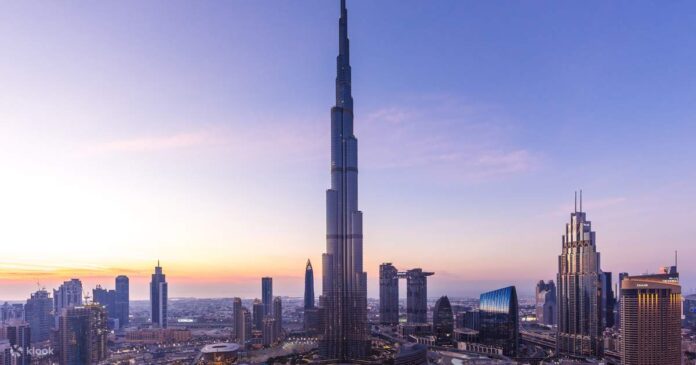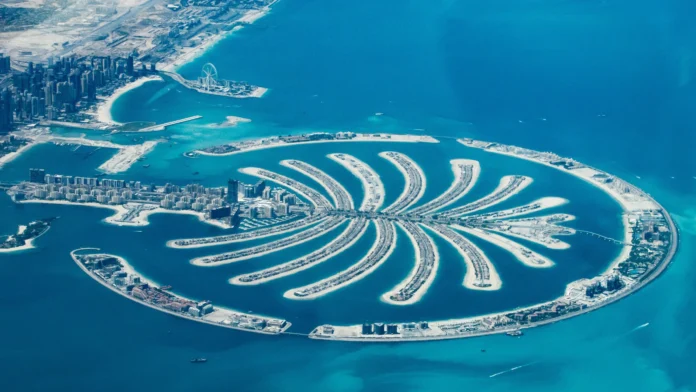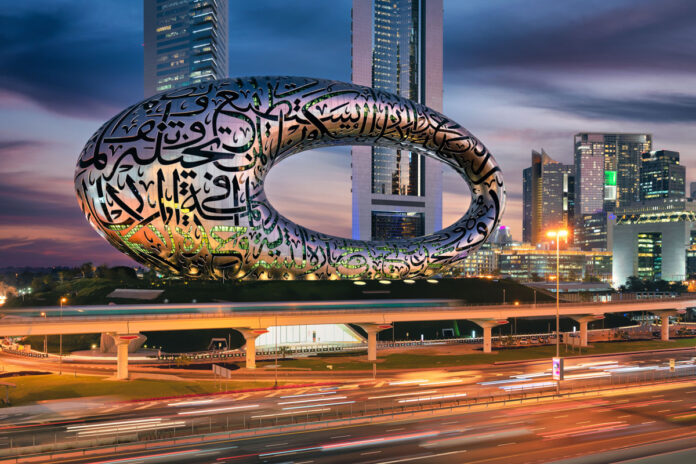Dubai, the shining jewel of the UAE, is a playground for ambitious architects and visionary developers. This city has transformed its skyline with some of the most daring and innovative architectural projects in the world.
In this blog post, we will explore X groundbreaking projects by architecture companies in Dubai that showcase the city’s commitment to pushing the boundaries of design and engineering.
1. Burj Khalifa: The Pinnacle of Engineering
Architect: Adrian Smith, Skidmore, Owings & Merrill

When you think of Dubai, the Burj Khalifa inevitably comes to mind. Standing at 828 meters, it is the tallest structure in the world. This marvel of engineering, brought to life by one of the leading architecture companies in Dubai, was completed in 2010 and has since become a global icon.
Highlights
- Height: 828 meters
- Floors: 163
- Materials: Over 330,000 cubic meters of concrete and 39,000 tonnes of steel rebar
The Burj Khalifa is not just about height. Its Y-shaped plan maximizes views of the Arabian Gulf and provides structural stability. The tower’s design incorporates Islamic architecture’s historical and cultural influences, blending tradition with modernity.
2. The Palm Jumeirah

Architect: Helman Hurley Charvat Peacock/Architects, Inc. (HHCP)
The Palm Jumeirah is a testament to Dubai’s ability to turn ambitious dreams into reality. This man-made island, shaped like a palm tree, extends into the Persian Gulf and adds over 520 kilometers of coastline to the city.
Highlights
- Size: 5 kilometers by 5 kilometers
- Trunk, 16 fronds, and a surrounding crescent
- Residential, leisure, and entertainment facilities
Creating an island of this scale involved significant dredging and reclamation work. The Palm Jumeirah is now home to luxury hotels, high-end villas, and world-class entertainment options, making it a prime example of Dubai’s innovative urban planning.
3. Museum of the Future

Architect: Shaun Killa, Killa Design
Scheduled to open soon, the Museum of the Future is an architectural wonder designed to inspire innovation and foster a spirit of exploration. The building’s striking torus shape, inscribed with Arabic calligraphy, is a futuristic design that stands out in Dubai’s skyline.
Highlights
- Height: 77 meters
- Structure: Stainless steel façade with 1,024 pieces
- Theme: Innovation, technology, and sustainability
The Museum of the Future aims to be a platform for creative minds to explore and shape the future. It will host exhibitions, immersive experiences, and workshops that focus on advancements in science and technology.
4. Al Wasl Plaza

Architect: Adrian Smith + Gordon Gill Architecture
Al Wasl Plaza is the central hub of Expo 2020, showcasing Dubai’s commitment to innovation and sustainability. This grand plaza, with its iconic dome, serves as a focal point for the expo, connecting all three thematic districts.
Highlights
- Dome Diameter: 130 meters
- Height: 67.5 meters
- Material: Steel trellis with projection capabilities
The dome acts as a 360-degree projection surface, creating an immersive experience for visitors. Al Wasl Plaza symbolizes unity and connection, reflecting the expo’s theme of “Connecting Minds, Creating the Future.”
5. One Za’abeel

Architect: Nikken Sekkei
One Za’abeel is an ambitious mixed-use development featuring two towers connected by the world’s longest cantilevered building, The Link. This project exemplifies Dubai’s innovative approach to urban development.
Highlights
Tower Heights: 304 meters and 241 meters
The Link: 226 meters long, 100 meters above ground
Components: Offices, residences, retail, and hospitality
One Za’abeel’s design focuses on creating a seamless integration of work, life, and leisure spaces. The Link will host dining, entertainment, and observation spaces, offering panoramic views of Dubai.
Conclusion
Dubai’s architectural landscape is a testament to the city’s ambition, creativity, and commitment to innovation. These projects not only redefine the skyline but also set new standards in design, engineering, and sustainability. As Dubai continues to grow and evolve, we can expect even more groundbreaking developments that push the boundaries of what’s possible.




